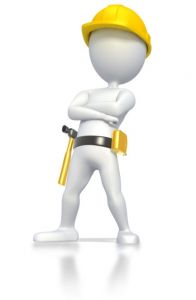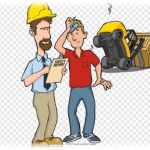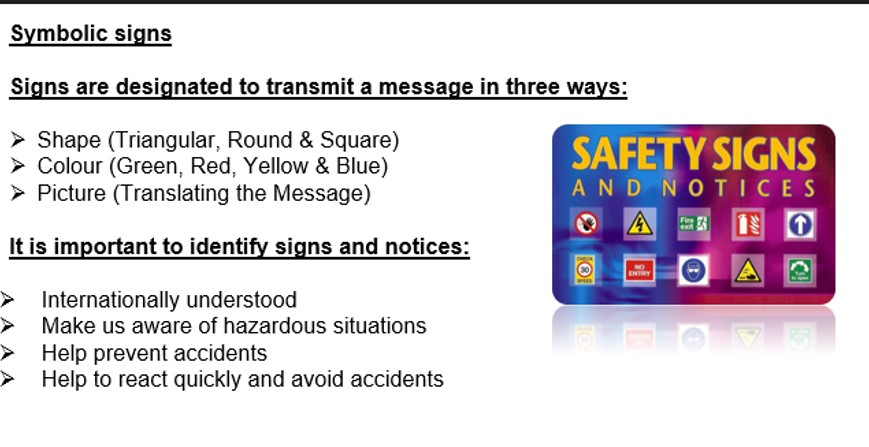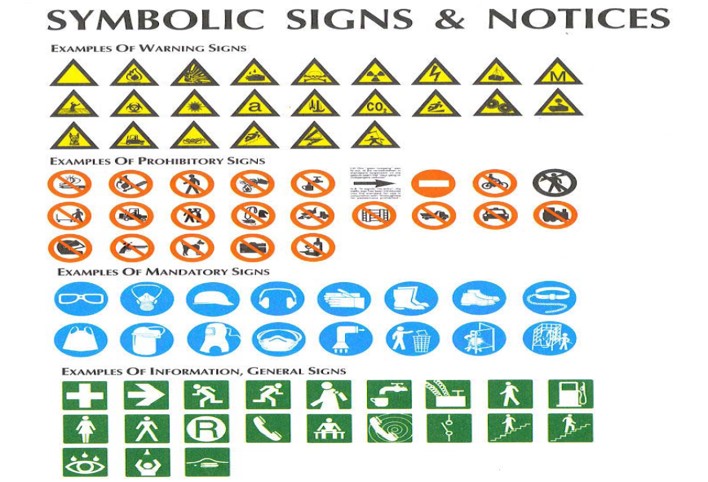Employer to Assess & Respond to Risk
The Employer must:
- Identify the hazards to health or safety to which employees may be exposed while they are at work;
- Assess the risks to health or safety to which employees may be exposed while they are at work;
- Record the significant hazards identified and risks assessed and
- Make those records available for inspection by employees.
Every Employer must consult with the Health and Safety committee at the mine to determine the measures to:
- eliminate any recorded risk
- control the risk at source
- minimise the risk
- in so far as the risk remains –
(i) provide for personal protective equipment; and
(ii) institute a program to monitor the risk to which employees may be exposed.
Every Employer must:
- periodically review the hazards identified and risks assessed, including occupational hygiene measurements and medical surveillance, to determine further control requirements.
- consult with the Health and Safety committee on the review
General duties of the employer:
- Ensure that the employee know and understand hazards
- Maintain equipment (serviceable & hygienic)
- Provide information, training, instruction and supervision
- Participate in decision making of Health & Safety.

HAZARDS AND RISKS
Explain the Requirements in terms of the Employer’s Responsibility to assess and respond to Hazards?
We at Barberton Mine undertakes to:
- Identify the relevant Hazards and assess the related Risks to which persons may be exposed
- Supply all the necessary Health and Safety Equipment and Health and Safety facilities to each Employee
- Maintain as far as is reasonably practical that Equipment and those facilities in a serviceable and hygienic condition
What is a Hazard?
- A hazard is something with the potential of causing harm.
- Hazards that impact occupational safety; physical, mechanical, electrical and chemical.
- Consequence; contact, impact, shock, burns.
- Hazards that impact Occupational Health; Biological, Ergonomically, Chemical, Physiological, Psychological.
- Consequence; Ingestion, Inhalation, Absorption, Stress and strains.
HAZARDS AND RISKS
- Explain the Legal Requirements in terms of the Employer’s Responsibility to assess and respond to RISK?
What is a Risk?
- RISK is the chance of loss or harm occurring.
Explain the meaning of Tolerable Risk?
- It is the acceptable level of a Risk
What is an Incident?
- An incident is an unplanned event that could or does result in harm or loss.
What Is Reasonably Practical?
Means practicable with regard to:
- Severity and scope of the hazard or risk concerned.
- State of knowledge reasonably available concerning that hazard or risk and of any means of removing or mitigating that hazard or risk.
- Availability & suitability of means to remove or mitigate that hazard or risk.
- Costs and the benefits of removing or mitigating that hazard or risk.
What is occupational health?
- Occupational health includes occupational hygiene and occupational medicine.
- Occupational hygiene means the anticipation, recognition, evaluation and
control of conditions at the mine, which may cause illness or adverse health effects to persons. - Occupational medicine means the prevention, diagnosis and treatment of illness, injury and adverse health effects associated with a particular type of work.
What is safety?
- Safety means the freedom from harm or loss.
HAZARDS & RISKS
- When will you do the following risk assessment ?
Baseline – Identifying major risks. - Issue Based – Accident, near miss or if any changes have occurred.
- Continuous – Audits, P.T.O’s and Checklists.
Explain how you will control a Risk:
- Control at the SOURCE
- Try to eliminate the Risk (e.g. bar down)
- Minimize the Risk (e.g. install support) by using P.P.E
What do you understand under the wording:
Risk severity and likelihood?
- Risk Severity = Is the magnitude of the loss occurring (level 1 – low, level 2 – minor, level 3 – moderate, level 4 – major, level 5 – critical)
- Likelihood = Is how regular does the loss occur (rare – once every 10 years, unlikely – once a year, possible – once in 3 months, likely – once a month, certain – every day
Baseline Risk Assessment
- A Baseline Risk Assessment is an overall (Helicopter) view of the Company to determine the current status of Occupational Health and Safety Risks associated with the company.
- Identify hazards, associated risks and develop controls to mitigate, minimise or control the associated risks.
- Introduction of a New Act, you assess where you are in terms of risk, identifying major risks, prioritise them and establishing a programme for future risk control.
- A baseline risk assessment needs to be comprehensive and may well lead to further, separate, more in-depth risk assessment studies.
- Baseline risk assessment is periodically reviewed, to ensure that it is still relevant and accurate.
Issue-based Risk Assessment
- An Issue Base Risk Assessment deals with specific Issues or Circumstances (need) and a separate risk assessment studies will need to be conducted e.g. standards, equipment or working methods.
- An Issue Base Risk Assessment will need to be carried out when, for example:
- A new machine is introduced into the mine.
- A system of work is changed or operations are altered.
- After an accident or a ‘near-miss’ has occurred.
- New knowledge comes to light and information is received which may influence the level of risk to employees at the mine.
- Identify hazards, associated risks and develop controls to mitigate, minimise or control the associated risks.
- An Issue Base Risk Assessment will normally be associated with a Change Management System
- During this process specific hazard identification techniques are used to identify all possible hazards related to a specific issue.
- The results of an issue based risk assessment are used for developing training programmes, standards, procedures, codes of practice and management systems.
HAZARDS AND RISKS
How do we prioritise our hazards ?
- From the highest risk rating to the lowest and according to the level of authority
Why is Teamwork so important when conducting Risk Assessments?
- It will encourage teamwork. It will make all aware of hazards and risks.
- You will need all the experience you can get from lowest to highest.
- Hazards are Identified and Risks are Assessed.
Hazard identification and Risk Assessment within a workplace
- Promote Positive Interpersonal Interaction
- Communication with persons must be friendly, but firm and clear in terms of understanding.
- Willingness to perform tasks must be evident.
- No delays are caused as a result of negative interaction.
- Promote Effective Teamwork.
- Assist other persons where required.
- Encourage team members to work together.
- Avoid dysfunctional conflict.
- Do not aggravate conflict situations.
HAZARDS & RISKS
- Proven method of hazard identification
- Go through the hazard check in a planned way, follow these steps:
- Start by identifying the hazards.
- Assess the risks that could come out of those hazards, taking into account what controls are already in place, evaluating the likelihood and consequence of any event happening and respond accordingly.
- Look at what actually happens in the workplace and, in particular include things that do not happen often.
- Include all employees, visitors and contractors.
- Always keep a written record of the assessment, including all actions you take and recommendations you make.














